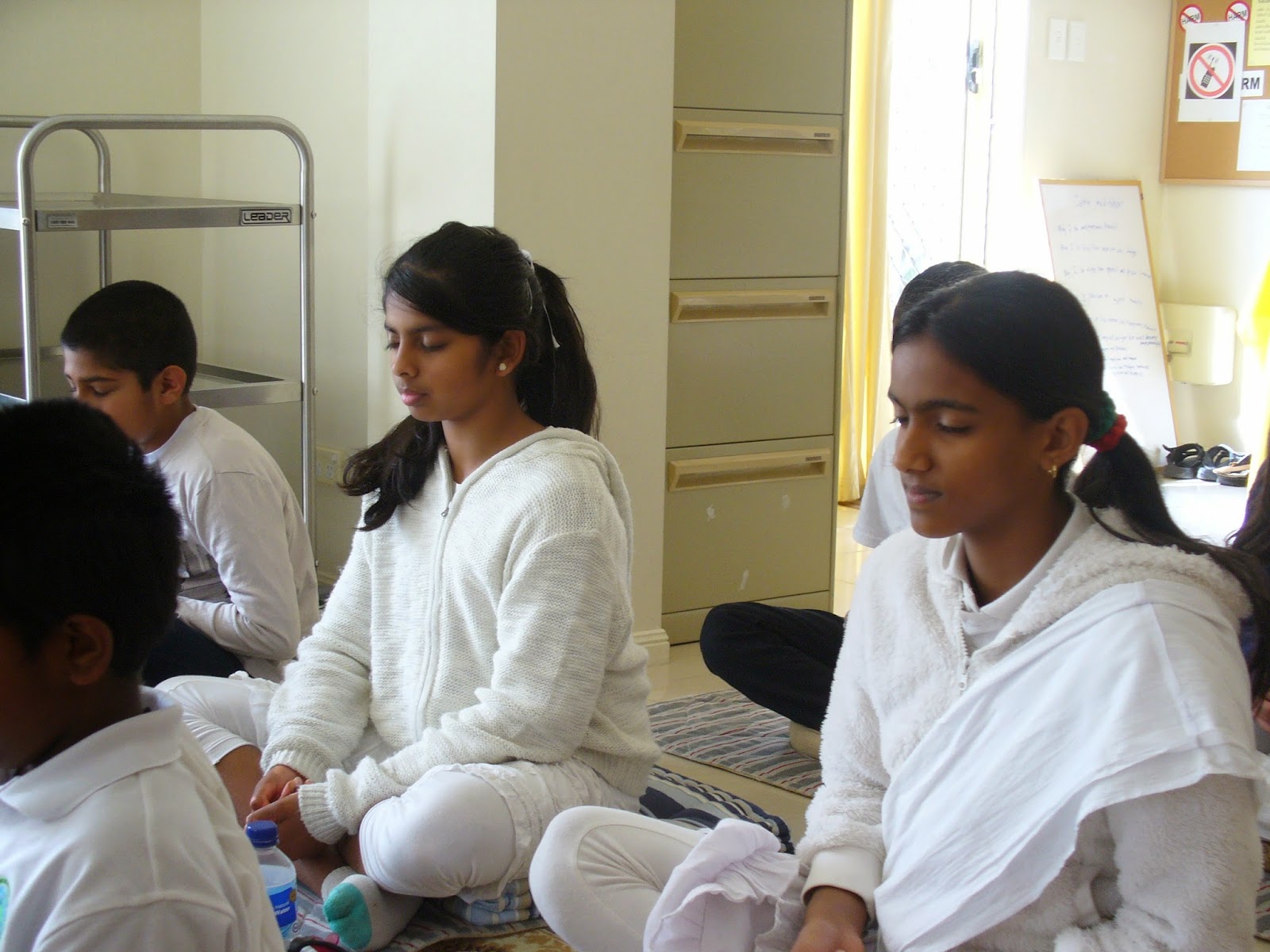 Mindfulness Workshop Yasodhara Dhamma and Sinhala School, Sri Lankarama Mahaviharaya,
Mindfulness Workshop Yasodhara Dhamma and Sinhala School, Sri Lankarama Mahaviharaya, Brisbane, Australia , 20.09.2014
Please find the audio recording of the workshop on the bottom of this page.







What is Mindfulness?
Mindfulness
is a kind of energy that we can generate. Everyone has the capacity to generate
the energy of mindfulness and allows us to be aware of what is going on in our
body, in our feelings, in our perceptions, and in the world around us. You can
define mindfulness as that kind of energy that allows us to be aware of what is
happening in the here and the now. We always feel that the world around us is
the object of our mind. But present moment is the only moment that allows us to
recognise how our sense faculties operate. If we are not in the here and the
now then we cannot know what is happening in the present moment. So
the Mindfulness is the self-awareness and the presence of our mind.
The opposite of mindfulness is forgetfulness. Mindfulness is always paying
attention to something. For example, when
you walk you know that you are mindful in your walk. When you are very aware of
your walking you begin to see something deeply. Therefore, mindfulness contains
concentration. Mindfulness also carries the energy of insight.
You sit for two hours near the computer and you forget
that you have a body. Your mind is on the computer and you leave your body left
alone and that moment your body and mind are not together. And when your body
and mind are not together, you are not fully alive. You are not with total
attention. In our daily life our mind is somewhere and our body is not there.
Our mind is suffering in the past or the worries concerning the future and
therefore the body is in another place and mind is in another place. In that
case there is no mindfulness and right attention. You are not fully alive. You
are not fully there, in the here and the now.
When you begin to breathe
in mindfully you bring your mind home, to your body. So if you know the
practice of mindfulness of breathing you begin to breathe in, then you know
that I am breathing in. And by breathing
in mindfully you are bringing your mind home – to your body. Then you breathe
out, and then you know that you are breathing out. You realise that, “breathing
was there since I was born, breathing is my life support and know that I am
alive.” When body and mind are together you are establishing the here and the
now together. You are fully alive. You are fully present and immersed in the
present moment. When you are sitting, walking, washing, eating, drinking and going
to sleep, etc., when you are paying attention to each moment mindfully, we are
fully alive and do not waste life. So the mindfulness is the
energy that helps us to bring our mind home to body so that self-awareness can
be established. Being aware of the here and the now connects with what we are doing
each moment, which is an effective way to increase fulfillment of life.
With mindfulness,
concentration and insight you can deeply go into every moment of your life
time. You don’t waste any moment in your life. You feel a live every moment. You feel energised. You don’t regret later in
life that you wasted your life. You will not get affected by fame, power and
sensual pleasures because you are content and happy in every moment of your daily
life. That is the power of mindfulness, concentration and insight. When concentration
and mindfulness are powerful enough then insight is established and with constant practice of
meditation, wisdom develops.
The Buddhist way of meditation teachers to pay
attention to something without the unwholesome roots of greed, hatred or
delusion and instead, let thoughts of relinquishing, loving-kindness and wisdom
dominate your mind.
The purpose of insight
meditation is to eliminate the unwholesome roots. By just paying full attention
to whatever you are doing at any time is not going to eliminate the unwholesome
roots. Full attention coupled with wise attention (yonisomanasikaraya)
accompanied by generosity, loving-kindness and wisdom can assist in the elimination
of all unwholesome roots of suffering in order to gain liberation and wisdom.
When the mind is
concentrated your hindrances will begin to disappear. This allows the joy to arise and you can be active and self- motivated
through the energy of mindfulness. You begin to see the real nature of the mind
and see things clearly. A mindfulness of equanimity will arise in you and you
will begin to understand what is right and wrong. You will not take hasty
decisions and no anger; no fear or greed can arise in you. You mind will be calm,
alert and because of this, a natural joy will arise.
When we feel calm and happy it is obvious that we are in a
better condition to achieve the goals and targets that we set ourselves from
day today. We will perform far better at our work and study because our mind
will be content and focused.
In the Satipattana
Sutta, the Buddha explains how to develop and cultivate the mind. The Buddha
offers Four Foundations of Mindfulness or four objects of meditation to
practice such as, body, feelings, thoughts and mental states. (Kayanupassana,
Vedananupassana, Cittanupassana and Dhammanupassana).
The Buddha encouraged his disciples to practice
Breathing Meditation not only to find tranquility and peace, and to be in the present moment, but also to end
all suffering. The Buddha’s Discourse on the “Four Foundations of
Mindfulness” (Satara Satipattana Sutta,Majjima Nikaya,
Sutta No.10) can be developed and accomplished through the “Breathing
Meditation” technique (Anapana Sati Meditation).
Follow this link for more information;
http://dhamma-stream.blogspot.com.au/2013/12/vipassana-or-insight-meditation.html














No comments:
Post a Comment